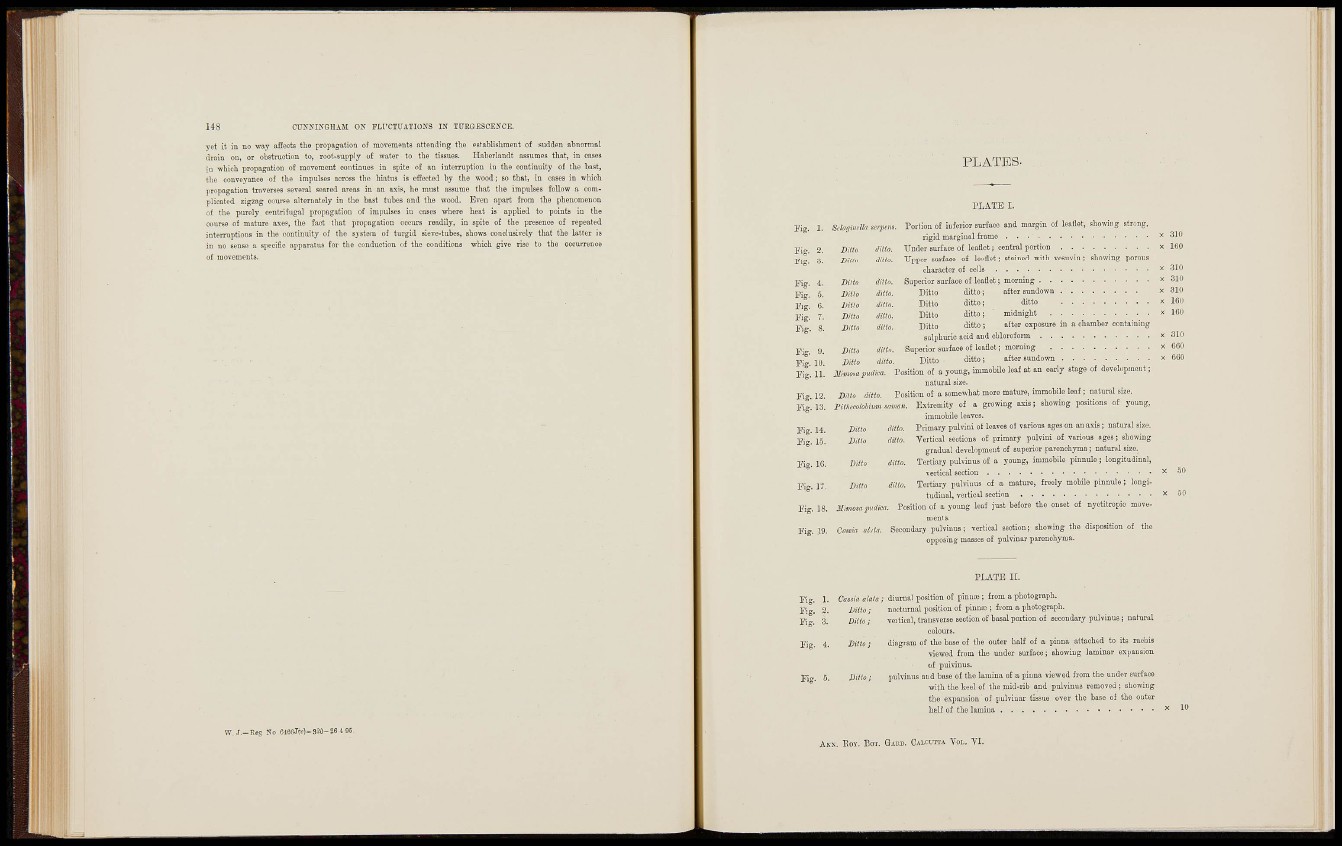
148 cu^•^'I^'GHAM o n f l i ' c t ü a t i ü n s i n t u r g e s c e n c e.
yet it in no way nffeots the propagation of movements attending the esfablislimeut of sudden abnormal
drain on, or obstruction to, root-supply of water to the tissues. Haberkndt assumes that, in cases
ill which propagation of movercent continues iu spite of an interruption in tho continuity of the bast,
the conveyance of the impulses across tho hiatus is effected by the wood; so that, in cases in which
]iropagation traverses several seared areas in an axis, he must assume that t!ie impulses follow a complifiated
zigzag course alternately in the bast tubes and the wood. Even apart from the phenomenon
of the purely centrifugal propagation of impulses in oases where heat is applied to points in the
omrse of mature ase?, the fact that propagation occurs readily, in spite of the presence of repeated
interruptions in the continuity of the s3'stem of turgid sieve-tubes, shows conclusively that the latter is
in no sense a specific apparatus for the conduction of the conditions which give rise to the
of movements.
PLATEST
L A T E I.
Fig. 1. Selagmlla serpens. Portion of inferior surface and margin of leaflet, showing strong,
rigid marginal frame 310
Tig. 2. Ditto iliito. Under surface of leaflet ; central portion x 160
Pig. 3. Sillo ditto. Upper surface of leuflet ; stained with vesuvin ; showing porous
character of cells * 310
Fig. 4. Dilto ditU. Superior surface of leaflet ; morning =<310
Fig. 5. Ditto ditto. Ditto ditto; after sundown x 810
Fig. 6. Ditto ddto. Ditto ditto; ditto =< 160
F i g 7 Ditto ditto. Ditto ditto; midnight =<160
F i g . 8. Ditto dilto. Ditto ditto ; after exposure in a chamber containing
Bolphurio acid aud chloroform 310
F i g 9 Ditto ditU. Superior surface of leaflet ; morning x 660
Fit 10 Ditto dilto. Ditto ditto; after sundown x600
Fig. 11. m>ma púdica. Position of a young, immobile leaf at an early stage of develupmo.it ;
natural size.
F i g 12 Ditto ditto. Position of a somewhat more mature, immobile leaf ; natural size.
Pig" i s ! ntheeohhium mmn. Extremity of a growing axis; showing positions of young,
immobile leaves.
Fig. 14. Ditto ditto. Primary pulvini of leaves of various ages on an axis ; natural size.
Pig. 15. Ditto ditio. Vertical sections of primary pulvini of various ages; showing
gradual development of superior parenchyma; naturnl size.
Fig. 10. Ditto ditto. Tertiary pulvinus of a young, immobile pinnule; longitudinal,
vertical section ôO
Pig. 17. Ditto dilto. Tertiary pulvinus of a mature, freely mobüe pinnule; longitudinal,
vertical section x50
Pig. 18. Mimosa pudica. Position of a young leaf just before the onset oí nyctitropio move-
Fig. 19. Ocsew alAii. Secondaiy pulviuus ; vertical section ; showing the disposition of the
opposing masses of pulvinar parencliyma.
K g . 1. Cassia alata
K g . 2. Dilto ;
Kg- 3. Dilto ;
Fig. 4. Ditto ;
Fig. 5. Bitlo ;
nocturnal position of pinnas; from a photograph.
veitical, transverse section of basal portion of secondary pulvinus; ualunil
colours.
diagram of the base of the outer half of a pinna attached to its rachis
viewed from the under surface; showing laminar expansion
of puivinus.
pulvinus and base of the lamina of a piuna viewed from tho under sui'face
with the keel of the mid-rib and pulviuus removed; showing
the expansion of pulviuar tissue over the base of the outer
half of the lamina
Akk. Eoy. Bot. Gaiîd. C a l c u t t a Yol. T I.